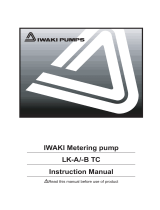
Table of contents
1 Identity code.................................................................................... 5
2
Safety chapter................................................................................. 7
3 Storage, transport and unpacking................................................. 13
4 Overview of equipment, control elements..................................... 14
5 Functional description.................................................................... 16
6 Assembly....................................................................................... 18
7 Installation..................................................................................... 20
7.1 Installation, hydraulic............................................................. 20
7.1.1 Basic installation notes....................................................... 23
7.2 Installation, electrical............................................................. 24
8 Start up.......................................................................................... 29
9 During Operation........................................................................... 32
10
Maintenance.................................................................................. 33
11 Repairs.......................................................................................... 37
11.1 Replacing the diaphragm.................................................... 38
11.2 Repair the diaphragm rupture sensor................................. 40
11.2.1 30 V version..................................................................... 40
11.2.2 EX Version....................................................................... 41
11.3 Valve repair......................................................................... 43
11.3.1 Double ball valves............................................................ 43
11.3.2 Single ball valves............................................................. 44
11.3.3 Plate valves...................................................................... 45
12 Troubleshooting............................................................................. 47
13 Decommissioning and Disposal.................................................... 50
13.1 Decommissioning................................................................ 50
13.2 Disposal.............................................................................. 51
14 Technical data............................................................................... 53
14.1 Performance data................................................................ 53
14.2 Precision............................................................................. 54
14.2.1 Reproducibility.................................................................. 54
14.2.2 Metering precision............................................................ 55
14.3 Viscosity.............................................................................. 55
14.4 Wetted materials................................................................. 55
14.5 Ambient conditions.............................................................. 56
14.5.1 Temperatures................................................................... 56
14.5.2 Air humidity...................................................................... 57
14.6 Housing degree of protection.............................................. 57
14.7 Stroke sensor (optional), intrinsically safe........................... 57
14.8 Diaphragm rupture sensor.................................................. 57
14.9 Motor data........................................................................... 58
14.10 Filling volumes.................................................................. 59
14.10.1 Gear oil........................................................................... 59
14.11 Sound pressure level........................................................ 59
14.12 Supplement for modified versions..................................... 59
15 Spare parts.................................................................................... 60
15.1 Spare parts.......................................................................... 60
15.2 Other material..................................................................... 61
15.2.1 Gear oil............................................................................. 61
16 Dimensional drawings................................................................... 62
17 Motor data sheet
............................................................................ 64
Table of contents
3




















